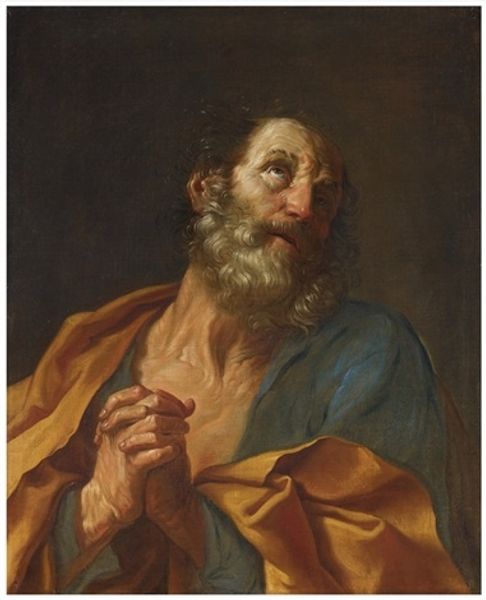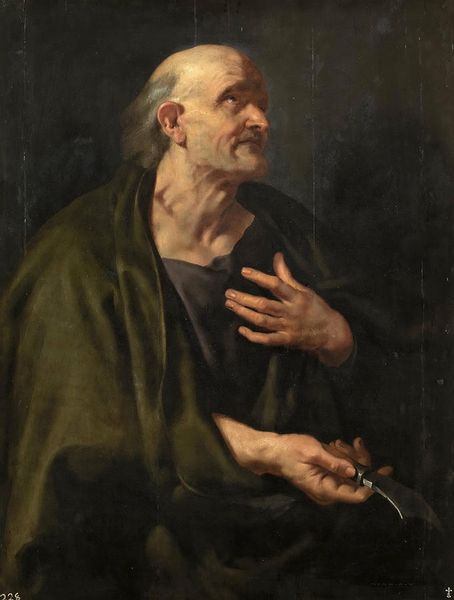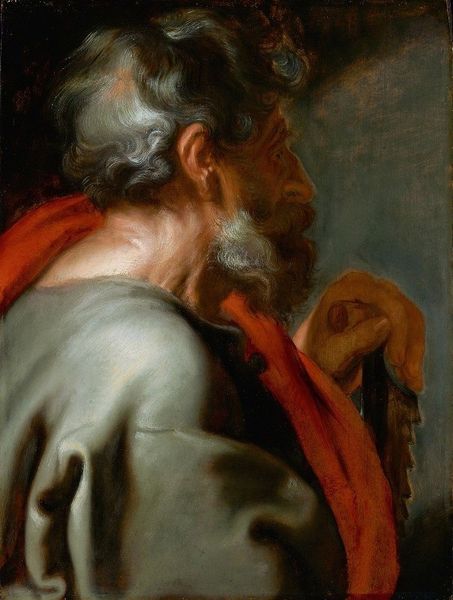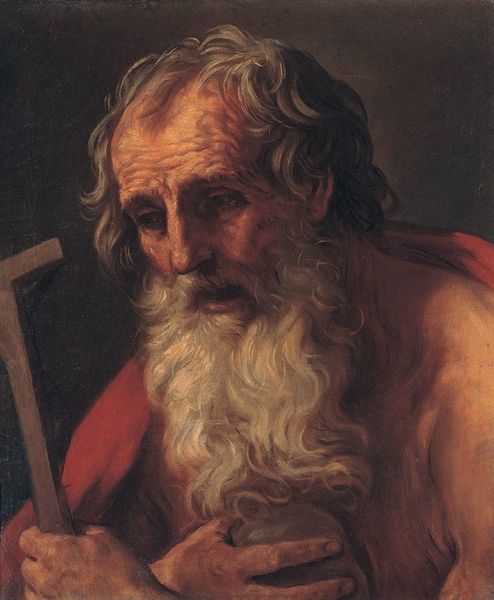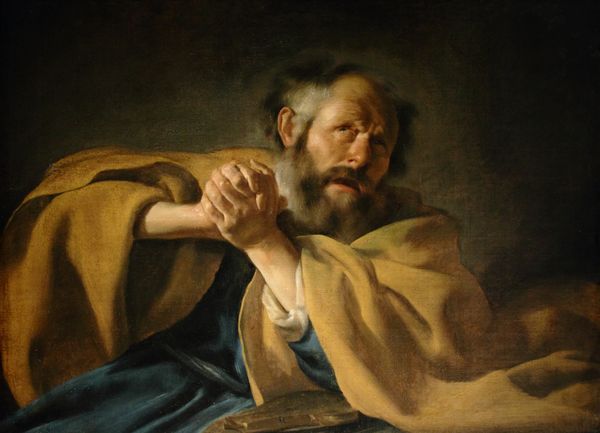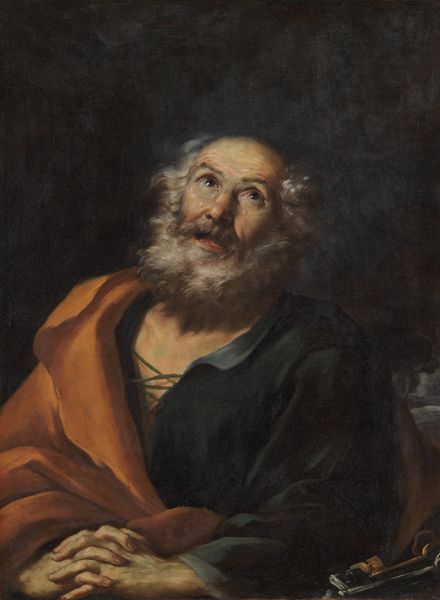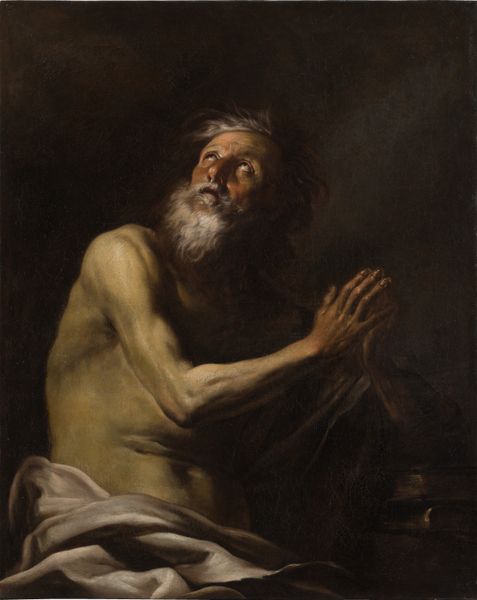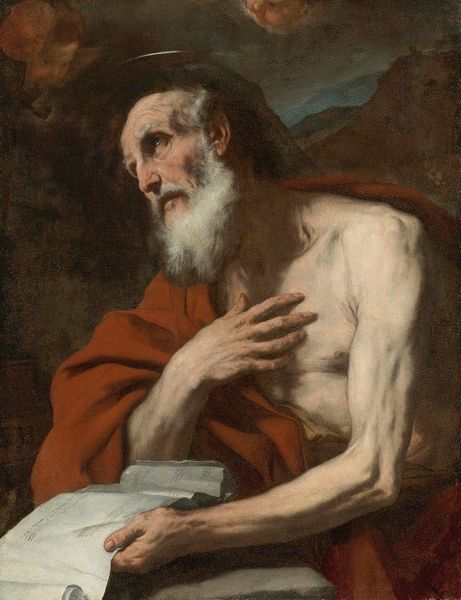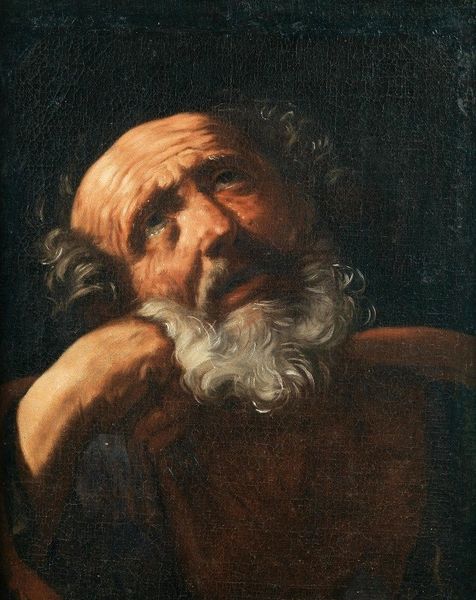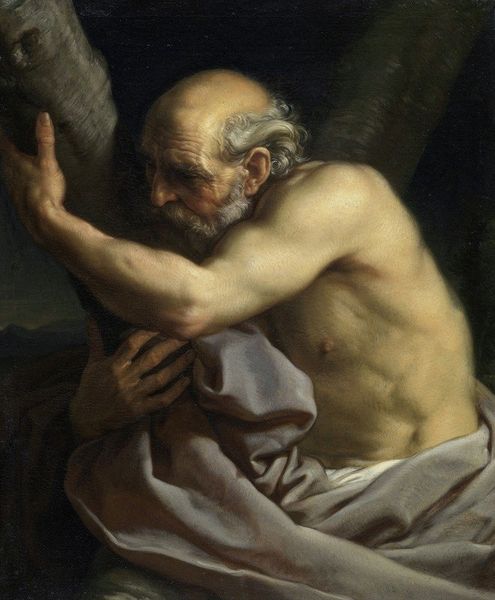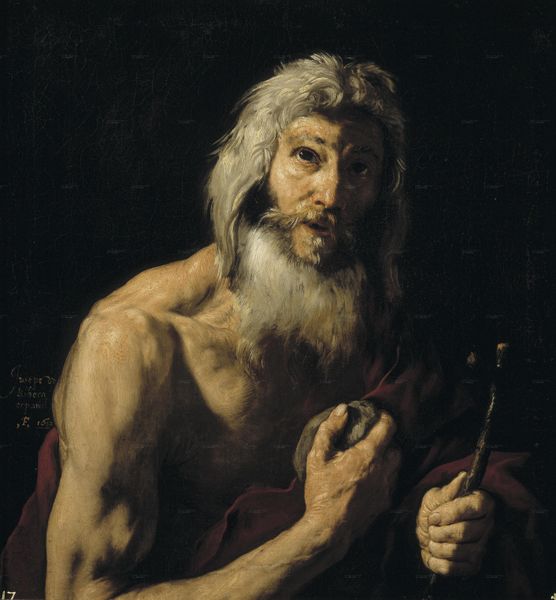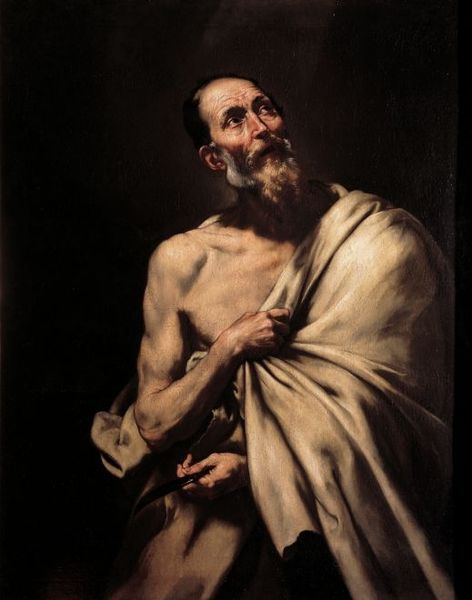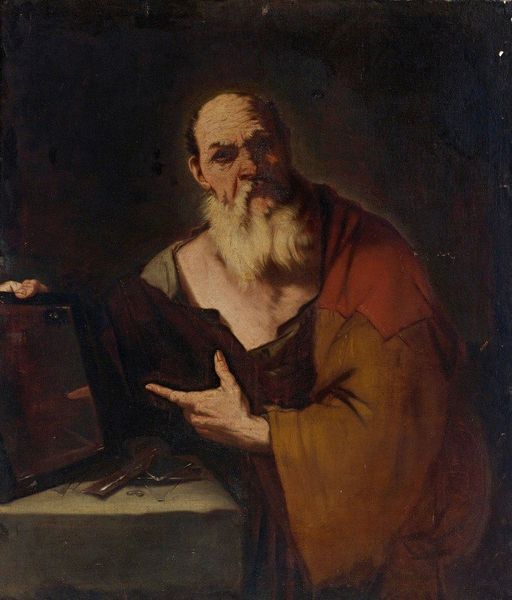
painting, oil-paint
#
portrait
#
baroque
#
portrait
#
painting
#
oil-paint
#
chiaroscuro
#
history-painting
Copyright: Public Domain: Artvee
Editor: This is Guido Reni’s “The Penitent Saint Peter,” an oil painting. I find it quite moving. The man's gaze and clasped hands evoke a sense of profound remorse. What do you see in this piece? Curator: It’s the visual language of contrition rendered masterfully. Think of Peter, not just as an individual, but as a vessel carrying centuries of Christian iconography. The upward gaze— a persistent symbol of hope and divine connection— isn’t merely a physical direction; it’s an established cultural motif signifying spiritual yearning. What does it suggest to you? Editor: Hope for redemption, maybe? Or seeking forgiveness? Curator: Precisely! Now, observe the chiaroscuro. The stark contrast is not just Baroque drama; it embodies the internal struggle between light and darkness, sin and redemption. The dark background emphasizes the radiant face, drawing the viewer’s eye and amplifying Peter’s emotional visibility. Editor: I hadn't thought about the light and dark representing an internal struggle, but that makes perfect sense. Is that something typical of this subject in Baroque art? Curator: Frequently. The Baroque artists used these visual symbols to invite viewers to participate in a story of complex, often contradictory emotions. This intense play of light and shadow became a visual shortcut to express the turbulence of the human spirit seeking solace. The figure embodies centuries of both devotion and self-reproach. Editor: Thank you, seeing it through that symbolic lens really deepens my understanding. Curator: And for me, revisiting the echoes of history that still resonate through such works is endlessly enriching.
Comments
No comments
Be the first to comment and join the conversation on the ultimate creative platform.

